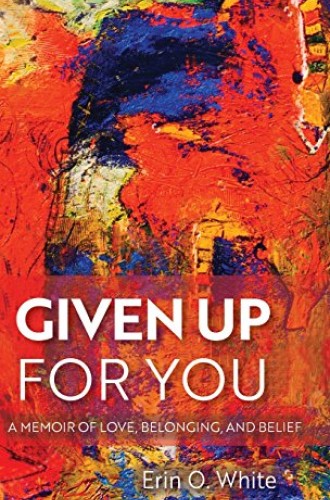Crisis of faith
First Erin White fell in love with Christ. Then she fell in love with Chris.
The plot that drives Erin White’s memoir—the story of a woman simultaneously falling in love with Catholicism and another woman—isn’t unique. Plenty of LGBT Catholics struggle to reconcile their sexuality with the expectations of what White calls “one of the most harshly and unapologetically homophobic denominations in the world.” What’s unique is the writing. Unlike most memoirists, White is an excellent writer. Her prose is poetic, funny, and deeply honest. She had me at page 14, where she describes reading the Gospels for the first time after a breakup with a boyfriend:
They stunned me. They were nothing like I had imagined. The language had a hard and declarative edge that was as poetic as it was spare. Not a wasted word. After a few nights of reading I could hear Jesus’ voice when he spoke. I liked his obtuse metaphors and his starkly beautiful language. . . . I was besotted. I began to read the great Catholic thinkers, the philosophers and poets and mystics, and in everything I read, Jesus seemed to fly off the page—he was a feeling, he was a voice, he was sweet relief from the loud world and my new loneliness in it. And then one spring night he was in my apartment.
That’s right, Jesus shows up in her apartment. Jesus of the Futon, to be precise. He sits next to her on the edge of her futon, “wearing the softest flannel shirt in the world. His hands were rough and his voice was warm and low, and for the moment he spent with me, he was extraordinarily good company.” After he vanishes, White wonders “if solitude would always feel this warm, this brimming.” A few weeks later, White steps into a Catholic church and falls in love with what she experiences there.
A few months after that, she meets a woman named Chris and falls in love with her. White admits, “I was in love with Chris. I would not stop seeing her.” From there, the struggle intensifies as White participates more deeply in both the life of the Catholic church and a shared life with Chris. As she and Chris get married and begin to create a family together, there are new struggles: conceiving a child, sacrificing career aspirations to be a stay-at-home mom, bringing an infant to worship, negotiating with a spouse over vacations.
But White’s tension over faith doesn’t recede. After being told by her priest that she must give up her love for Chris and being told by Chris that she should renounce the church, a “club based on bigotry and exclusion,” White stays away from church for a while. The years pass. She avoids talking about faith with Chris, goes on retreat with some Catholic sisters, meets with a renegade priest who presides at same-sex weddings, and eventually finds her place—sort of—at a local Congregational church. But it’s far from the Catholic church that she loves. They sing shape note hymns and have communion once a month. The minister, Steve, who is also a sheep farmer and a poet, refuses to put a cross in the sanctuary.
At the end of the book [spoiler alert!], there are no easy answers. There is no second visitation by Jesus of the Futon. White visits the local Catholic church once, where she savors the host as it dissolves on her tongue, then returns to the Congregational church. “I wanted more cross,” White confesses. “I wanted more Jesus. . . . What I wanted was that brief Eden where I loved Chris but had not yet chosen her, when I still believed everything could be mine. But it couldn’t. It can’t. And so I have a church without a cross.”
When I finished reading these words, I desperately wanted to give White more. I wanted to transplant my liberal urban church into her rural Massachusetts context, so that she could have a cross, weekly Eucharist, genuine celebration over her marriage to a woman, and plenty of Jesus talk, all in the same space. But White's reality is that she can’t have all those things. And of course, her larger point is that we can never have it all—gay or straight, rural or urban, Catholic or Protestant. Not this side of the eschaton. We’re always going to have to give up something.
Although she can’t have everything, White comes to realize, neither does she have to give up everything. “Why don’t you go to church?” Chris gently suggests one Sunday morning shortly after the birth of their second child. And so White does. Again and again. “Bit by bit,” she explains, “I forged a new belief, and it was meaningful and complicated and real.” She describes a moment when Steve is presiding at communion:
He looked at the bread, and then looked around the room at all of us. “Is it the body of Christ?” he asked. He smiled, shook his head gently. “I don’t know.” Steve’s words rang inside me. Perhaps because of how he said them, part apology, part invitation. A doubt that did not move to diminish belief. Is this the body of Christ? . . . I didn’t know either. But I loved it so.







